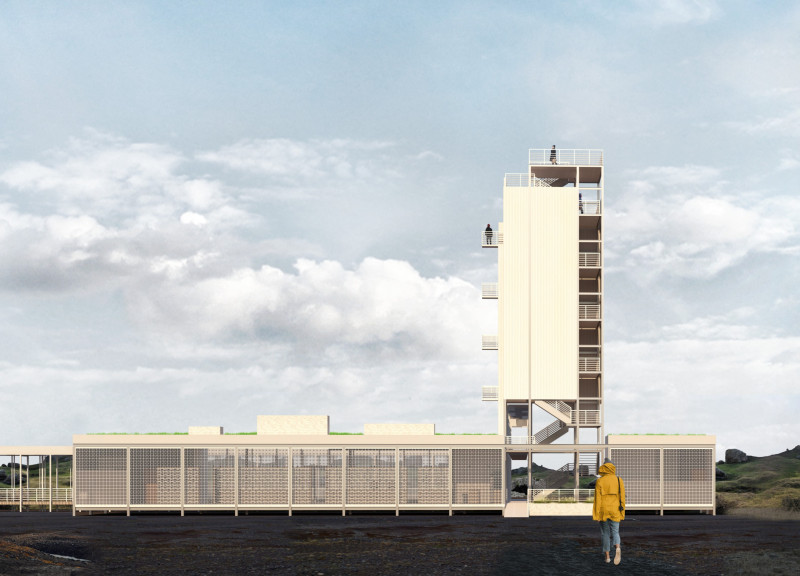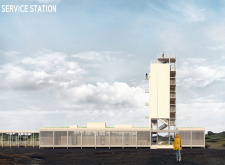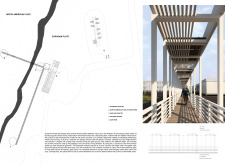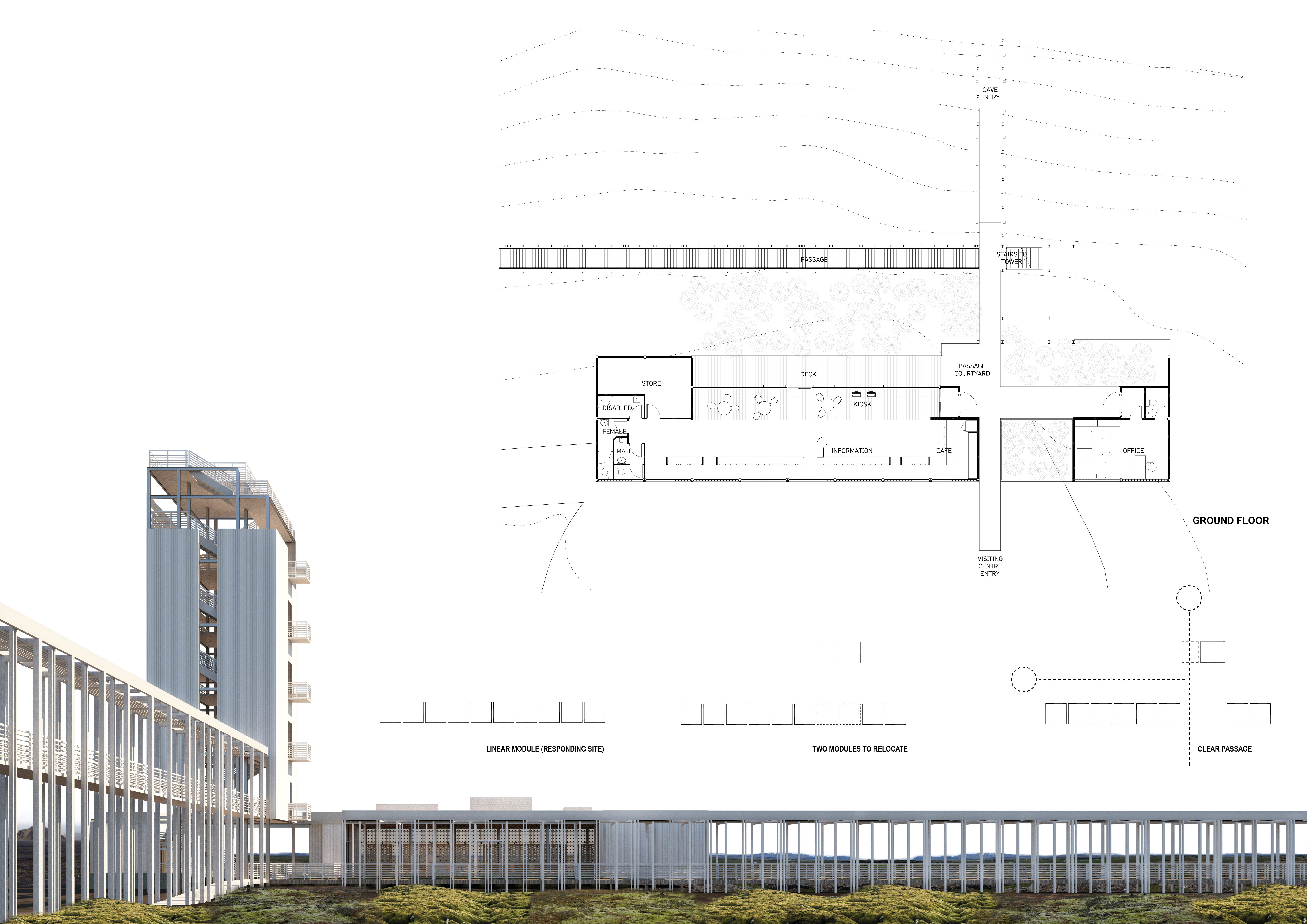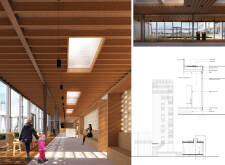5 key facts about this project
The service station is located in an area where the North American Plate meets the Eurasian Plate, creating a unique geological landscape. This setting influences both the aesthetic and functional aspects of the design, which aims to facilitate visitor interaction with the nearby caves. The overall concept focuses on improving functionality while establishing a meaningful relationship with the natural environment.
Design Concept
Linear modules have been integrated into the landscape, aligning with the geological crack to guide visitors toward the cave entrances. This modular arrangement provides clarity and ease of navigation for those exploring the area. Each element serves a purpose and enhances the overall experience, allowing the service station to function as both a helpful facility and an architectural feature that complements its surroundings.
Architectural Elements
Two distinct modules form a tower, finished with bright white corrugated walls. This choice of material serves to enhance visibility of the structure within the landscape. The design aims to create a space that is not only practical for visitors but also visually appealing, connecting the built environment to the natural beauty around it.
Materiality and Light
The building consists of utility modules designed for various visitor amenities. Glass blocks are used selectively to allow natural light to filter into interior spaces. This design decision creates a welcoming atmosphere and helps maintain comfort indoors. The incorporation of transparency strengthens the connection between the indoor experience and the exterior landscape, highlighting the area's natural features.
Spatial Transition
The service station emphasizes the importance of visitor transition from the built environment to nature. It functions as a point of entry for exploration rather than just a temporary stop. The thoughtful arrangement of modules and pathways encourages movement, allowing visitors to engage with the geological formations nearby. This careful consideration results in a design that respects and enhances the beauty of the natural surroundings, with each structural element thoughtfully contributing to the overall experience.


